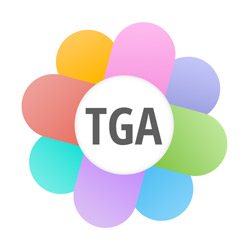The Role of Visual Regression Testing Tools for Flawless User Experience

Visual regression testing tools play a crucial role in ensuring a flawless user experience in software development. These tools enable developers to detect and prevent visual defects that may arise during the development process. By comparing screenshots of different versions of a website or application, visual regression testing tools identify any unintended changes in the visual appearance. This helps maintain consistency and quality in the user interface (UI) and user experience (UX). In this article, we will explore the significance of visual regression testing in user experience and how these tools can be effectively implemented in the development workflow.
Significance of Visual Regression Testing in User Experience
Visual regression testing is a technique used to identify any visual discrepancies or regressions in the UI and UX of a software product. It involves comparing screenshots or images of different application versions to identify unintended changes. This process is particularly valuable in ensuring a flawless user experience.
With the increasing complexity of modern web and mobile applications, it is challenging for developers to manually verify each component's visual integrity. Even minor changes in the codebase or the addition of new features can introduce visual defects that negatively impact the user experience. Visual regression testing tools address this challenge by automating the comparison process, thereby reducing the risk of visual regressions.
By integrating visual regression testing into the development workflow, developers can catch visual defects before they reach the end users. This saves time and effort and helps maintain a high-quality standard in the final product. Moreover, it allows developers to confidently make iterative changes, knowing that the visual aspects of the application are being consistently monitored.
You must follow a systematic approach to use visual regression testing in user experience effectively. Here are the key steps:
Selecting the right tool: Choose a visual regression testing tool that suits your development environment and requirements.
Setting up the baseline: Capture screenshots of the initial application version and establish it as the baseline.
Automated screenshot comparison: Configure the visual regression testing tool to capture screenshots of each page or screen in the application.
Analyzing and addressing discrepancies: Review the results generated by the visual regression testing tool.
Continuous integration and regression testing: Integrate visual regression testing into your continuous integration (CI) pipeline to catch visual defects early in development.
Understanding Visual Regression Testing Tools
Visual regression testing tools are invaluable for developers, providing automated and efficient ways to conduct visual comparisons. These tools analyze the captured screenshots, highlight differences, and generate reports, simplifying the identification and resolution of visual issues. Let's explore some popular visual regression testing tools:
Functionize
Functionize is a comprehensive visual regression tool combining AI-powered visual testing with intelligent test automation. It uses advanced algorithms to detect visual changes accurately, even in dynamic web applications.
Selenium
Selenium is a widely adopted open-source framework for automated testing. While primarily used for functional testing, it also offers capabilities for visual regression testing.
Appium
Appium is a widely used open-source framework for mobile application testing. It supports both Android and iOS platforms and provides the ability to capture screenshots of mobile app screens.
Test stigma
Test stigma is a cloud-based visual regression testing tool that simplifies the process of visual comparison. Its user-friendly interface allows developers to upload reference images and conduct visual regression tests easily.
Implementing Visual Regression Testing Tools in the Development Workflow
Developers utilize specialized tools to leverage visual regression testing to streamline the process effectively. These visual regression testing tools capture screenshots or snapshots of the application's interface and compare them with previous versions or predefined baselines. By employing sophisticated algorithms, these tools identify any differences between the images, highlighting the specific areas that have changed.
Integrating visual regression testing tools into the development workflow offers several benefits. Firstly, it saves valuable time and effort by automating the comparison process, eliminating the need for manual inspection of numerous visual elements. Additionally, these tools facilitate efficient collaboration among developers, designers, and quality assurance teams. By providing visual diff reports and highlighting the specific visual changes, these tools enable effective communication and swift issue resolution.
Moreover, visual regression testing tools enhance the stability and maintainability of software projects. Developers can catch visual inconsistencies early in the development cycle by running visual regression tests as part of the continuous integration and continuous deployment (CI/CD) pipeline. This proactive approach prevents regressions from going unnoticed and ensures that any visual changes introduced during the development process are thoroughly examined and rectified.
Conclusion
In software development, ensuring a flawless user experience is imperative for success. With its ability to detect and address visual discrepancies, visual regression testing plays a pivotal role in achieving this goal. Using visual regression testing tools, developers can proactively identify unintended visual changes, maintaining a polished and cohesive user interface. Incorporating these tools into the development workflow saves time, enhances collaboration, and promotes stability and maintainability. Ultimately, visual regression testing tools empower developers to deliver software that offers a flawless and delightful user experience.
About The Author
Related Blog
View All-
Checklist to select Mobile App Vendor
With technological advancement, mobile applications have become an essential part of an individual's day-to-day operations and life. As per Comscore, people spend 87% of their time on an average on mobile applications. As per sources, By 2022, The number of ...
-
The Emerging Fashion App Market: Where Mobile Apps and Fashion Experts Combine
Thousands of new apps emerge every day. New types of apps emerge as more and more industries become digitized. Fitness apps replace personal trainers and gym memberships. Mobile games compete with console gaming. The fashion industry is the latest to take advantage ...







